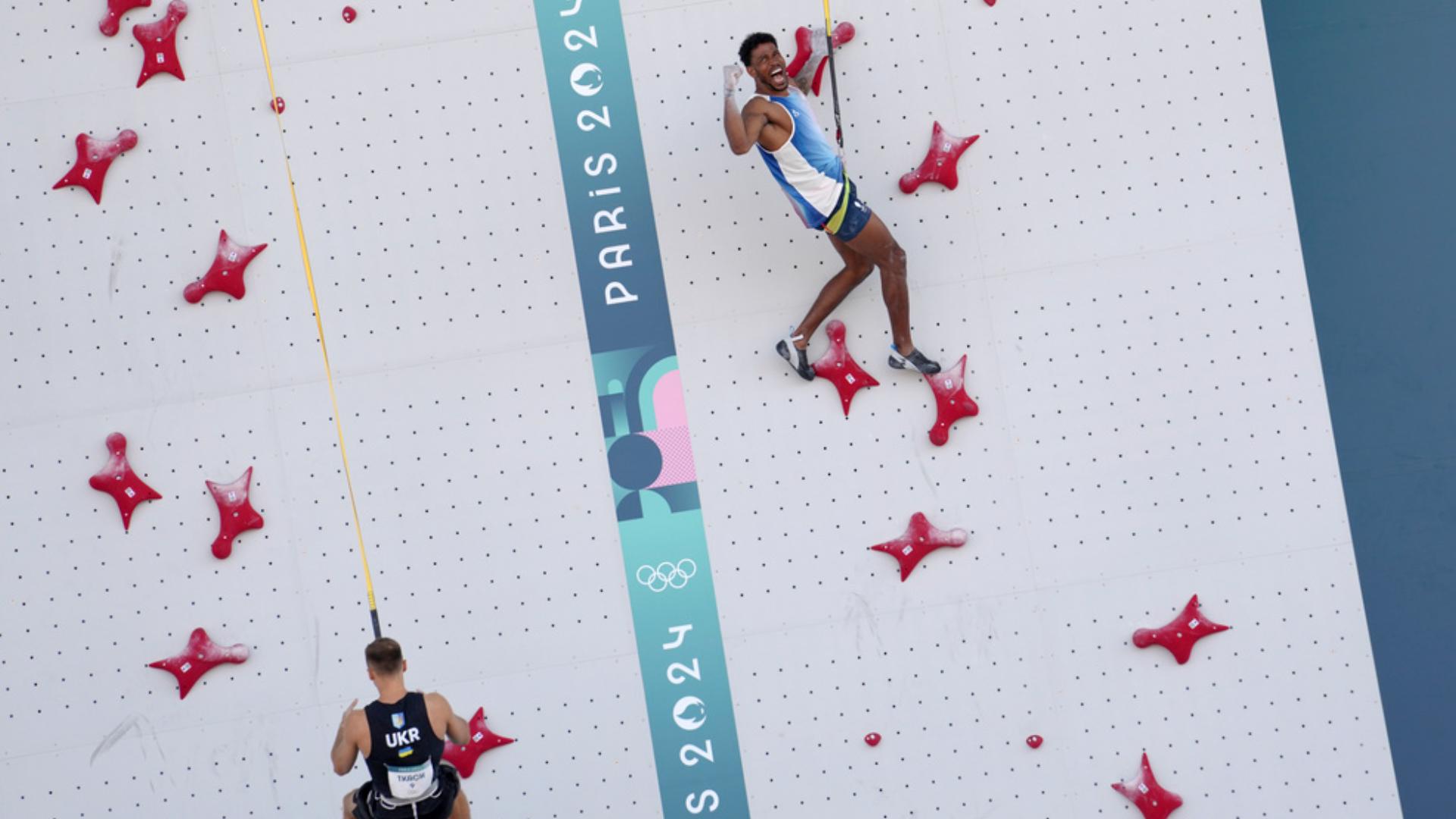Sport climbing is not just a test of strength; it’s a thrilling blend of strategy, agility, and mental fortitude. As it makes its debut on the Olympic stage, excitement has reached new heights. Athletes from around the world are gearing up to showcase their skills in this exhilarating sport that challenges both body and mind.
With routes that twist and turn, each climb tells a story of perseverance and determination. Fans can expect breathtaking performances as climbers navigate vertical walls with grace and precision. But what exactly does sport climbing combined entail? Let’s dive into the history, format, key athletes, training regimens, and why including this dynamic event in the Olympics marks an incredible milestone for sports enthusiasts everywhere.
The History of Sport Climbing
Sport climbing has roots that reach back to the late 19th century. Initially, climbers sought new challenges in nature rather than competition. They scaled cliffs and mountains, driven by adventure.
The sport began evolving in the 1970s when enthusiasts started tackling indoor walls. Gyms provided a controlled environment for training and skill development. This shift sparked interest among diverse audiences.
By the late 1980s, competitions emerged globally, bringing together climbers to showcase their prowess. Events like lead climbing and bouldering gained popularity as athletes pushed personal limits.
In recent years, sport climbing has garnered attention for its unique blend of athleticism and artistry. The International Olympic Committee recognized its potential and included it in the Tokyo 2020 Summer Olympics lineup—a historic moment for both athletes and fans alike.
Introduction to the Olympic Event: Sport Climbing Combined
Sport climbing combined is a thrilling addition to the Olympic Games. It showcases athletes’ versatility and strength across three distinct disciplines: speed, bouldering, and lead climbing.
In this event, climbers face off against each other in a race for time and skill. Speed climbing tests their ability to ascend a vertical wall quickly. Bouldering challenges them to tackle short, powerful routes without ropes. Lead climbing requires stamina as they scale higher walls using harnesses and ropes.
Athletes accumulate points based on their performance in each discipline. The climber with the lowest overall score wins gold—adding an element of strategy that keeps fans on the edge of their seats.
The debut of sport climbing combined at the Tokyo 2020 Olympics captivated audiences worldwide. Athletes demonstrated not only physical prowess but also mental fortitude under pressure. This unique blend makes it one of the most exciting events in modern Olympic history.
Format and Rules of Sport Climbing Combined
Sport climbing combined features three distinct disciplines: lead climbing, bouldering, and speed climbing. Each discipline tests different skills and requires unique strategies.
Lead climbing involves ascending a wall while clipped into anchors as climbers strive for height within a set time. Precision and endurance are crucial here.
Bouldering focuses on shorter, more challenging routes without ropes. Climbers tackle problems using strength and technique over short bursts of power.
Speed climbing is all about racing against the clock on a standardized route. Athletes navigate the same wall in head-to-head matches, showcasing their agility and quickness.
Scoring is straightforward yet intense: athletes earn points based on their performance across all three formats. The athlete with the highest cumulative score wins gold at the Olympics!
Key Competitors to Watch at the Olympics
As the sport climbing combined event approaches, several athletes are generating excitement among fans. One standout is Janja Garnbret from Slovenia. She has dominated competitions with her exceptional skills and mental strength.
Another competitor to keep an eye on is Adam Ondra from the Czech Republic. Known for his versatility, Ondra excels in both lead climbing and bouldering, making him a formidable contender.
On the women’s side, Japanese climber Akiyo Noguchi brings years of experience and impressive technique to the wall. Her ability to strategize during competitions sets her apart.
Don’t overlook the rising star, Alberto Ginés López from Spain. The young athlete’s energy and talent have caught attention on international stages recently.
These climbers not only push boundaries but also inspire future generations in this thrilling discipline.
Training and Preparation for Sport Climbing Combined
Training for sport climbing combined requires a multifaceted approach. Athletes must master three distinct disciplines: bouldering, lead climbing, and speed climbing. Each area demands unique skills and techniques.
Bouldering focuses on short, powerful ascents without ropes. Climbers work on their strength and problem-solving abilities to tackle challenging routes known as “problems.”
Lead climbing tests endurance and technique over longer routes while managing the risk of falls. It’s crucial to develop both mental resilience and physical conditioning here.
Speed climbing is all about agility and quick reflexes. Competitors race up standardized walls, so training involves repetitive drills to enhance timing.
Nutrition plays a vital role too; balanced diets fuel intense workouts. Mental preparation cannot be overlooked either—visualization techniques help athletes stay focused under pressure during competitions.
Together, these elements create a comprehensive training regimen essential for success in the sport climbing combined Olympics event.
Benefits of Including Sport Climbing in the Olympics
Sport climbing brings a fresh energy to the Olympic Games. Its dynamic nature captivates audiences, making it exciting to watch. Athletes push their limits, showcasing incredible strength and mental agility.
Including sport climbing promotes physical fitness among younger generations. It encourages them to engage in an active lifestyle while enjoying outdoor activities. Climbing can be both a communal and personal experience, fostering friendships as well as individual growth.
The event also highlights diversity in sports. Climbing accommodates various skill levels and body types, inviting participation from all walks of life. This inclusivity resonates deeply within communities worldwide.
Moreover, it enhances environmental awareness. Many climbers advocate for conservation efforts, reminding us of our responsibility toward nature while we explore its beauty through this thrilling sport. The Olympics serve as a global platform for these messages to reach millions of viewers around the world.
Conclusion
Sport climbing combined at the Olympics represents a thrilling fusion of skill, strength, and strategy. As this sport continues to rise in popularity, it showcases not just athletic prowess but also the dedication and hard work that climbers pour into their craft. With its inclusion in the Olympic Games, audiences worldwide get a chance to witness breathtaking performances and inspiring stories from athletes who have devoted years to mastering their skills.
The format brings excitement through its unique blend of disciplines—speed climbing, bouldering, and lead climbing all come together for an electrifying showdown. Fans can expect fierce competition as key athletes take center stage, demonstrating what makes sport climbing so captivating.
As we watch these competitors train tirelessly for one shot at Olympic glory, it’s clear that sport climbing is more than just a physical challenge; it’s about overcoming obstacles—both literal and metaphorical. This dynamic addition to the Olympics not only enriches the sporting landscape but also introduces new fans to the world of climbing.
With each event showcasing remarkable talent against stunning backdrops, sport climbing combined promises unforgettable moments that will resonate with viewers long after the final ascent. So keep your eyes peeled; this thrilling spectacle is sure to leave a lasting impression on both seasoned fans and newcomers alike.

